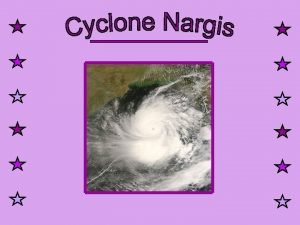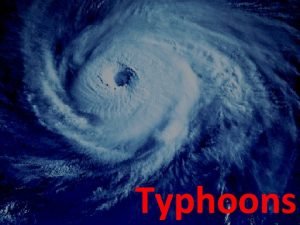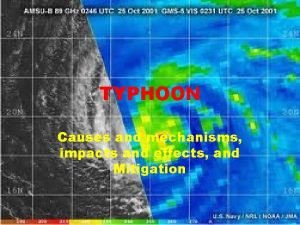Cyclone Nargis is the deadliest tropical storm in








- Slides: 8


Cyclone Nargis is the deadliest tropical storm in the recorded history of Burma (Myanmar). It devastated many areas in Burma, as well as some areas in Sri Lanka, Bangladesh and India.

The main features of a cyclone are: the eye, the eyewall and rain bands. The eye is situated at the very centre of a cyclone and is a region of mostly calm weather. Surrounding this is the eyewall, a ring of towering thunderstorms where the most severe weather occurs. Rainbands are compact regions of vertical air movement, which spiral into the centre of the cyclone.

Cyclones are made from a simple thunderstorm, with full cooperation from both the ocean and the atmosphere. The water in the ocean must be warmer than 26. 5 degrees Celsius. The moisture and the heat from this hot water is the ultimate source for cyclones.

The official estimate of the death toll of the cyclone is now more than 20, 000, with a further 41, 000 missing and as many as 1 million have been left homeless. Approximately 2. 5 million people have been severely affected by the cyclone and its aftermath.

Cyclone Nargis caused catastrophic destruction to the Burmese landscape. Thousands of buildings have been flattened, power lines downed, trees uprooted, roads blocked and water supplies disrupted.

It was extremely hard for the emergency responses to help the people in Burma because the government would not let anyone into the country. Even when they eventually did gain entry into the country, the government insisted on distributing aids by themselves.

By Megan Howat & Sian Kelly















